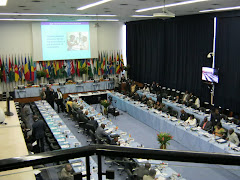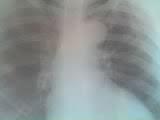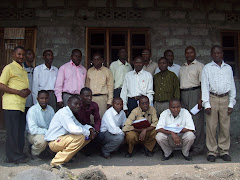Une étude révèle que, suite à la mise en œuvre de la loi antitabac, le nombre d'hospitalisations d'enfants pour asthme a diminué
Depuis le 26 mars 2006, le Smoking, Health and Social Care Act, la loi écossaise sur le tabac, la santé et la protection sociale, interdit de fumer dans tous les lieux publics et de travail. Des études menées précédemment ont montré que, suite à l’adoption de la loi d’interdiction totale de fumer, les troubles respiratoires chez les employés de bars ont diminué. Une étude publiée récemment dans le New England Journal of Medicine a étudié d’impact de cette législation sur les enfants en examinant la tendance, avant et après l'entrée en vigueur de la loi, en matière d'hospitalisations d’enfants pour asthme. Pour cela, l’étude a utilisé les registres d’admissions entre janvier 2000 et octobre 2009 afin de déterminer les taux d’hospitalisation pour asthme des enfants âgés de moins de 15 ans.
Les principaux résultats:
·Avant la mise en œuvre de la loi antitabac, le taux d’hospitalisation pour asthme augmentait en moyenne de 4,4 % par an. Après son entrée en vigueur, on a observé une réduction moyenne du taux d’hospitalisation de 15,1 % par an.
·La baisse du nombre d’hospitalisations d’enfants pour asthme est survenue aussi bien chez les enfants d’âge préscolaire que d’âge scolaire.
Avant l'adoption de la loi écossaise, on craignait que celle-ci n'augmente le tabagisme à la maison, ce qui aurait augmenté de fait l’exposition des enfants à la fumée de tabac environnementale. Les études relatives à l’exposition des adultes et des enfants n’ont apporté aucune preuve que le tabagisme ne se soit déplacé dans les foyers. Au contraire, la législation s’est accompagnée d’une augmentation des restrictions volontaires à la maison. Ces dernières réduisent l’exposition des enfants à la fumée de tabac environnementale. D’ailleurs, depuis l’entrée en vigueur de la loi écossaise, l’exposition globale des enfants à la fumée secondaire a diminué.
Messages clés :
·Depuis la mise en œuvre de la loi écossaise, l'exposition des enfants à la fumée de tabac environnementale a diminué, ce qui s’est traduit par une baisse du nombre d’hospitalisations pour asthme.
·Les lois d’interdiction totale de fumer, qui permettent de réduire l'exposition à la fumée secondaire, ne bénéficient pas uniquement aux travailleurs mais également aux enfants.
Le résumé [en anglais uniquement] de ce rapport est disponible à l’adresse suivante :http://www.nejm.org/doi/pdf/10.1056/NEJMoa1002861
Autres ressources:
·Pour accéder aux directives pour l'application de l'article 8 de la CCLAT sur la protection contre l'exposition à la fumée du tabac :
[français] : http://www.who.int/fctc/cop/art%208%20guidelines_french.pdf
·Pour accéder aux Points sur les faits relatifs aux lois antitabac
[français], notamment un Point sur les faits relatif aux effets sanitaires de la fumée secondaire, allez à : http://tobaccofreecenter.org/fr/resources/smoke_free_laws/fact_sheets
Citation complète : Mackay D, Haw S, Ayres J, Fischbacher C, Pell J. Smoke-free Legislation and Hospitalizations for Childhood Asthma. New England Journal of Medicine Vol. 363:1139-45, 2010.
Le New England Journal of Medicine est la plus ancienne revue médicale publiée sans interruption. Fondée en 1811, elle a recours à processus d’évaluation par les pairs et de révision afin de déterminer l’exactitude, l’innovation et l’importance scientifiques des manuscrits.
Pour toute question concernant ces documents ou la façon dont vous pouvez les utiliser dans le cadre de vos efforts de lutte antitabac, n’hésitez pas à contacter research@tobaccofreecenter.org.
Study Finds Decreases in Childhood Asthma Hospitalizations after Smoke-free Law Implementation
Scotland’s Smoking, Health and Social Care Act banned smoking in all public places and workplaces as of March 26, 2006. Previous studies have shown that adoption of the comprehensive smoke-free law has been associated with reduced respiratory symptoms among workers in bars. A recent study published in the New England Journal of Medicine examines the impact of the legislation on children by looking at trends in childhood asthma hospitalization admissions before and after the law went into effect. The study used hospital admissions records between January 2000 and October 2009 to determine asthma hospitalization rates for children under the age of 15 years.
Key findings:
·Admissions for asthma before the implementation of the smoke-free legislation increased at an average rate of 4.4% per year. After implementation, there was an average reduction in admission rates of 15.1% per year.
·The reduction in childhood asthma hospitalization admissions occurred for both preschool and school-age children.
Before implementation of the Scottish legislation, there was concern that it might increase smoking activity to homes, leading to an increase in exposure to environmental tobacco smoke among children. Studies of exposure among both adults and children have shown no evidence of displacement of smoking to the home. Instead, the legislation has been followed by an increase in voluntary restrictions in the home. Household smoking restrictions reduce the exposure of children to environmental tobacco smoke, and the overall exposure of children to environmental tobacco smoke has fallen since the implementation of the Scottish legislation.
Key messages:
·The exposure of children to environmental tobacco smoke has fallen since the implementation of the Scottish legislation, resulting in fewer hospital admissions for asthma.
·In addition to workers, children also benefit from comprehensive smoke-free legislation through reduced exposure to environmental tobacco smoke.
A link to the abstract [English only] can be found at: http://www.nejm.org/doi/pdf/10.1056/NEJMoa1002861
Additional Resources:
·To access FCTC Article 8 Guidelines on protection from exposure to secondhand smoke [English]: http://www.who.int/fctc/cop/art%208%20guidelines_english.pdf
·To access fact sheets on smoke-free policies [English] including a fact sheet on health effects of secondhand smoke, go to: http://tobaccofreecenter.org/resources/smoke_free_laws/fact_sheets
Full Citation: Mackay D, Haw S, Ayres J, Fischbacher C, Pell J. Smoke-free Legislation and Hospitalizations for Childhood Asthma. New England Journal of Medicine Vol. 363:1139-45, 2010.
The New England Journal of Medicine is the oldest continuously published medical periodical. Established in 1811, it employs a rigorous peer-review and editing process to evaluate manuscripts for scientific accuracy, novelty, and importance.
If you have any questions about the materials or how you may use them in your advocacy efforts, please e-mail research@tobaccofreecenter.org
****************************************
Campaign for Tobacco-Free Kids
1400 Eye Street, NW, Suite 1200
Washington, DC 20005
(202) 296-5469
(202) 296-5427 fax
www.tobaccofreecenter.org
www.tobaccofreekids.org
jeudi 23 décembre 2010
mardi 14 décembre 2010
Agir Ensemble will be implenting new program for cervical cancer prevention
AGIR ENSEMBLE, in its efforts to prevent cancer, will be implementing a new program for cervical cancer prevention. It is a campaign for cervical cancer prevention during 6 months from January 2011 which includes a training of doctors and nurses in cervical cancer screening. This program is financially supported by UICC Cancer Campaign.
Thank you.
Dr Sahani.
Thank you.
Dr Sahani.
Capacity Building Workshop Training of UICC in Cape Town





A workshop training in cancer prevention including social marketing for Tobacco control has been held by UICC in Cape Town/South Africa in March 2010. AGIR ENSEMBLE has been represented as a member of UICC by Dr Mateus Kambale Sahani.
Thank you.
Libellés :
agissons ensemble pour notre promotion
Capacity of health professionals in cervical cancer screening in Goma/DRC M. Kambale Sahani1,2, M.M. Mutumwa3, P.K. Mukama4





This article has been published in the 2010 IGCS biennual meeting held in Prague/Czech Republic:
Capacity of health professionals in cervical cancer screening in Goma/DRC
M. Kambale Sahani1,2, M.M. Mutumwa3, P.K. Mukama4
1Health Department, AGIR ENSEMBLE, 2Virunga General Hospital-GOMA, 3Clinic Chaine de l'Espoire-GOMA, 4Centre Medical Belle vue, GOMA, The Democratic Republic of the Congo
Overview
Cancer is now the leading cause of death worldwide, 28 million of people live with cancer in the world and 8 million die each year by the disease. In DRC, cancer killed approximately 33,000 people in 2005 and cervical cancer was the killer no 1 among women and prostate cancer among men. If nothing is done now, this figure will reach 65,000 in 2030. Source: WHO infobase
In DRC no woman has access to cervical cancer screening in all the life (service not available in all the country, a country of more than 70,000,000 people).
Objectives
This research project aims to know the degree of understanding and competency of health professionals (doctors and nurses) in screening methods (VIA and VILI) to make sure that the screening can be initiated without any difficulty in the city of Goma and, if there are difficulties, how they can be solved to this services being accessible to people. To measure also their capacity of using cryotherapy for treatment of precancerous lesions.
Method
We used the STEPS Method of the WHO, especially Step 1 using questionnaire and interview of 50 doctors (general practitioners) and 500 nurses in the city of Goma. Sample was constituted from all public and private hospitals and health centers of the city. We used comparative statistic test among people who know the method and those who don’t know it.
Hypothesis
Our study was focused on the following hypothesis:
- Health professionals know well the usage of VIA and VILI methods,
- Health professionals usually educate their patients on prevention of cervical cancer,
- Health professionals know how to use cryotherapy to treat precancerous lesions.
Results
At the end of our study, we found that:
1. 85% of doctors (43) never understand about VIA and VILI methods and 98% of nurses (490) are too.
2. 10% of doctors (5) have understood about the methods but don’t know how to proceed and 1% of nurses (5) are too.
3. 5% of doctors (3) know the substances used for VIA and for VILI but don’t know how they are used and 1% of nurses (5) are too.
4. 10% of doctors (5) give an education message to their patients (avoid genital infections) and 2% of nurses (10) do too.
5. 10% of doctors (5) are aware of HVP vaccine to prevent cervical cancer and no nurses (0) know that.
6. No health professional (doctors or nurses) knows that precancerous lesions can be treated and no one knows how to use cryotherapy.
7. No health professional (doctors or nurses) has participated in a campaign for cervical cancer prevention.
8. No health institution in Goma has a screening service.
Conclusions
Health professionals in the city of Goma don’t have sufficient skills in cervical cancer screening and HPV vaccine. This constitutes a need for training in this area and it is also a big challenge to the availability of the service.
Libellés :
agissons ensemble pour notre promotion
Inscription à :
Articles (Atom)



































